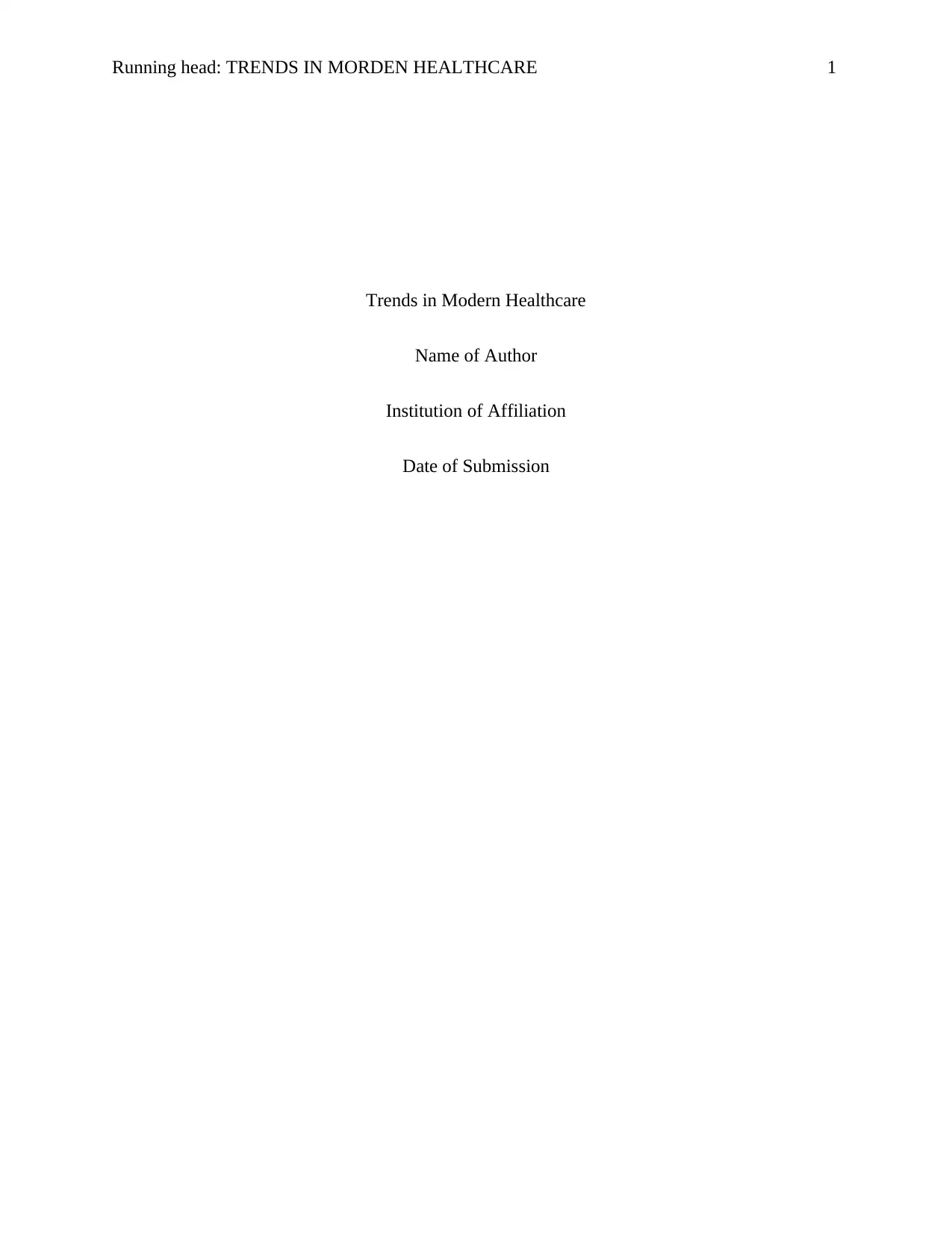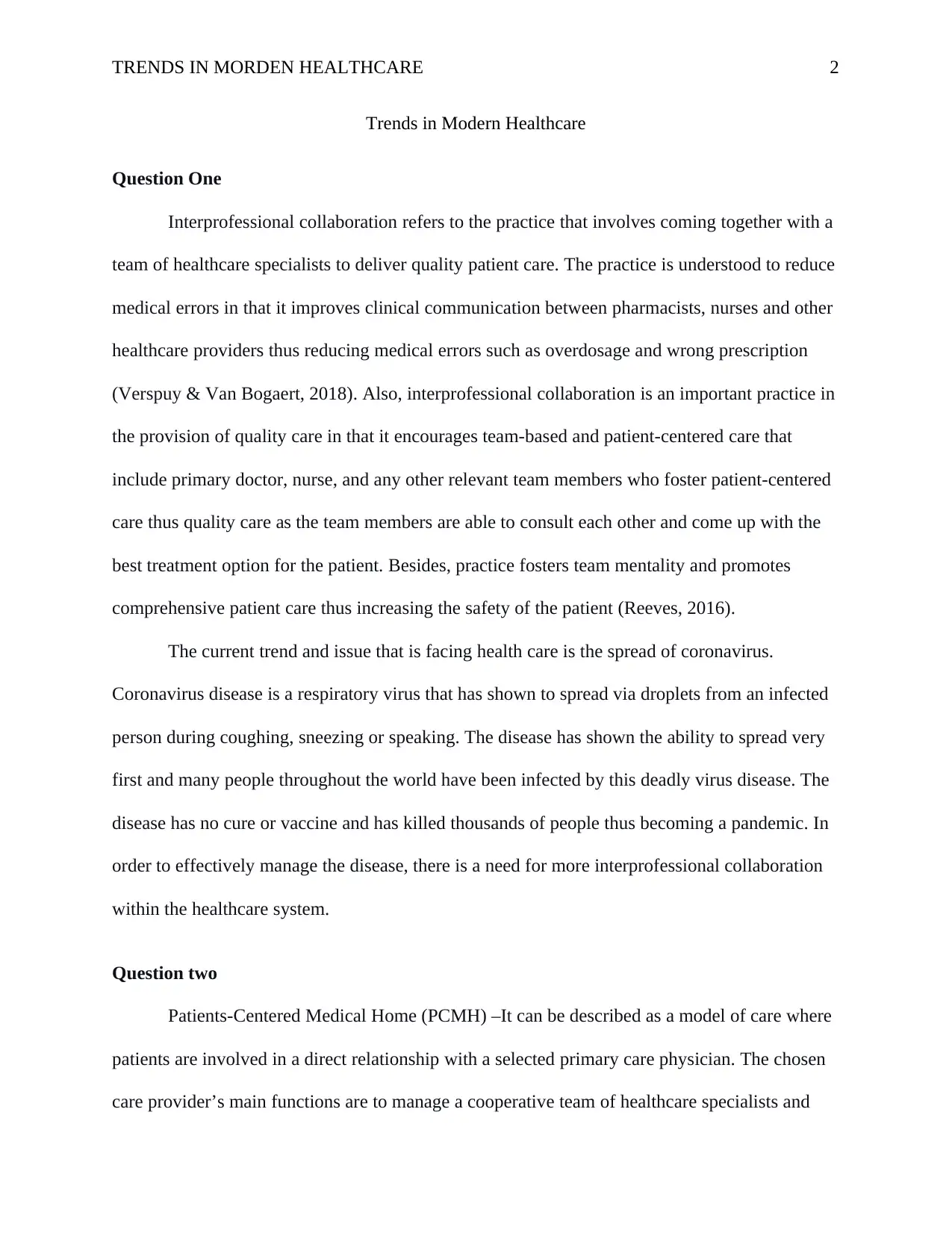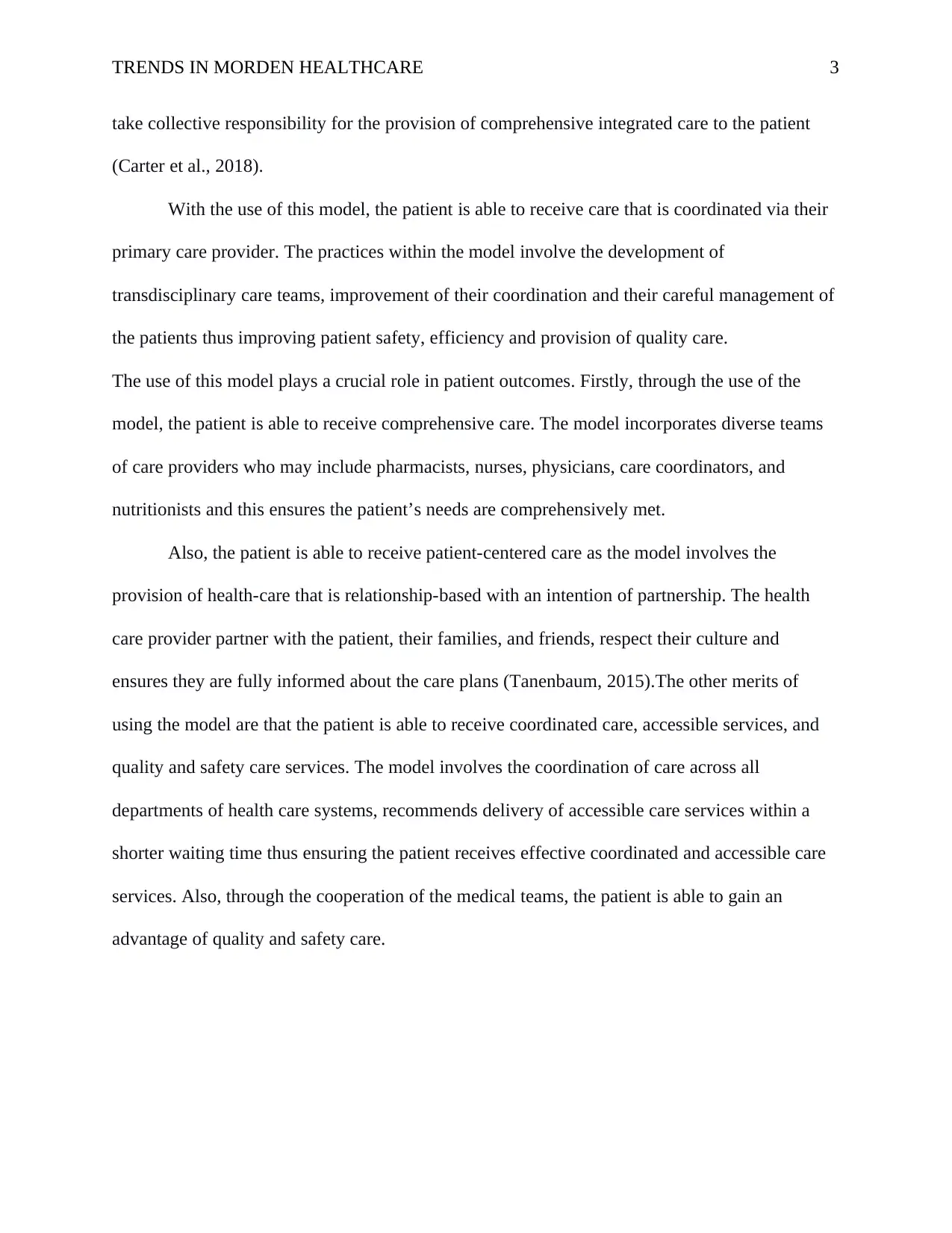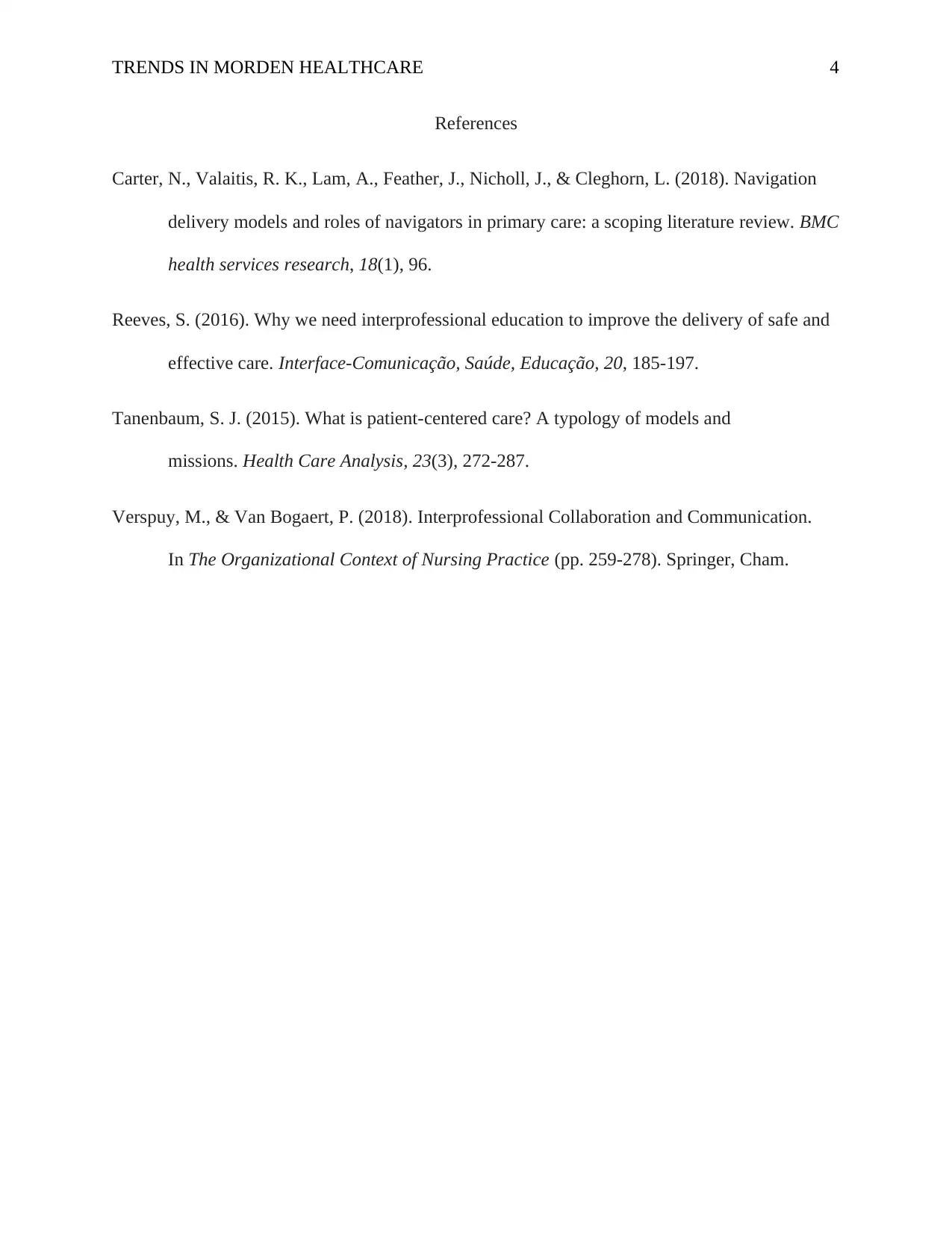Report on Trends in Modern Healthcare: Collaboration and PCMH Analysis
VerifiedAdded on 2022/08/01
|4
|789
|22
Report
AI Summary
This report examines key trends in modern healthcare, specifically focusing on interprofessional collaboration and the Patient-Centered Medical Home (PCMH) model. The report begins by defining interprofessional collaboration as a practice that unites healthcare specialists to deliver quality patient care, emphasizing its role in reducing medical errors and fostering team-based, patient-centered care. The report also discusses the current healthcare issue of the spread of the coronavirus and highlights the need for more interprofessional collaboration to effectively manage the disease. Furthermore, the report analyzes the Patient-Centered Medical Home (PCMH) model, describing it as a care model where patients have a direct relationship with a primary care physician. The report explains the benefits of the PCMH model, including comprehensive, patient-centered, coordinated, accessible, and quality care, emphasizing its positive impact on patient outcomes by incorporating diverse care teams and promoting relationship-based healthcare. The report provides references to support the findings.
1 out of 4











![[object Object]](/_next/static/media/star-bottom.7253800d.svg)